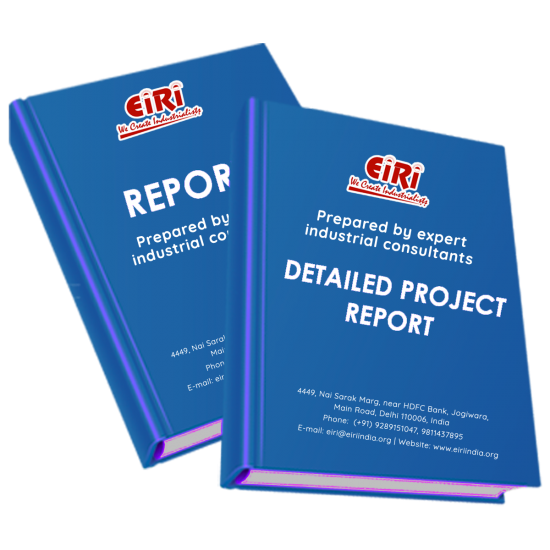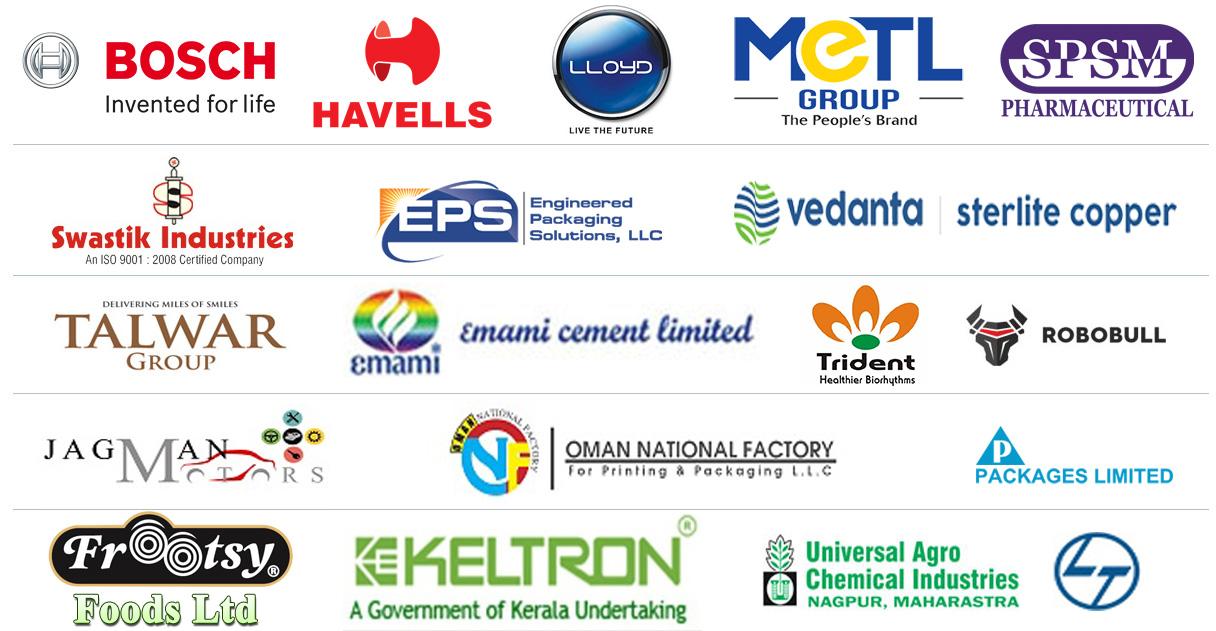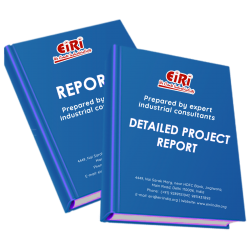Detailed Project Report on Calcium Aluminate

- More than 40 years of experience
- Managed by expert industrial consultants
- ISO 9001-2015 Certified
- Registered under MSME, UAM No: DL01E0012000
- 24/5 Research Support
Get your quesries resolved from an industry expert. Ask your queries before report or book purchase. - Custom Research Service
Speak to the our consultant to design an exclusive study to serve your research needs. - Quality Assurance
All reports are prepared by highly qualified consultants & verified by a panel of experts. - Information Security
Your personal & confidential information is safe & secure.
CALCIUM ALUMINATE
[EIRI/EDPR/1531] J.C. 325
INTRODUCTION
Calcium Aluminate Ca3Al2o6 often formulated as 3CaO.Al2O3 to high light the proportion of oxides from which it is made, is the most basis of the Calcium Aluminate.
Like Ordinary Portland Cements, Calcium Aluminates are composed of oxides of Calcium, Aluminium and Silicon, but in different proportions.
The Alumina (Al2O3) fraction is between 35% and 70%, and the Silica fraction (SiO2) as low as zero or trace. Calcium Aluminates are usually characterized as low range, mid range and high range, with the alumina content at 35 – 42%, 48 – 58%, and 65 – 70% respectively. The bulk of the remaining is CaO, with SiO2 from 4% down to zero. Ferrites and oxides of titanium are also present, particularly in the low range.
Clearly to achieve this difference in chemistry, quite different raw materials are used.
The production of Portland Cements is based on Limestone and varying proportions of clay, shale, bauxite and other potential sources of Silica and ferrites. The production of low and mid range calcium aluminates is based on bauxites of varying purity and high grade limestone. The production of high range calcium aluminates is based on metallurgical grade alumina and calcined high – grade limestone.
MINERALOGY
Chemistry is a means to an end, the formation of minerals, crystalline in nature, which when mixed with water form hydrates constituting the gels which bind aggregates together in concrete.
Taking the simplest system shown in the phase diagram, that of high range calcium aluminates, the active minerals formed in the production process are CA (strength and flow) CA2 (not much use) and C12A7 (early set). CaO or free lime is present in ppm quantities.
The phase diagram looks neat and tidy, and a cursory look will provoke the question as to why you don’t just manage the process so you’re in the CA + C12A7 box.
This can be done, theoretically, at around 65% alumina content, but production tools and raw materials being somewhat less than perfect, if you try it you end up with a lot of liquid phases in the burning zone and block the kiln within minutes. So operators add a bit more alumina, make some CA2 along with the rest, and have a more robust process.
HYDRATION
Without water, cement is of no use whatsoever. What counts are hydrates formed by cement reacting with water, they are what bind aggregates together to make concrete. Even in the most simple systems the reactions are complex and depend a lot on temperature.
COST ESTIMATION
Plant Capacity 8.00 MT/Day
Land & Building (4 Acres) Rs. 1.75 Cr
Plant & Machinery Rs. 1.10 Cr
W.C. for 3 Months Rs. 1.39 Cr
Total Capital Investment Rs. 4.41 Cr
Rate of Return 25%
Break Even Point 60%
CONTENTS
INTRODUCTION
USES AND APPLICATION
PROPERTIES
MARKET SURVEY
PRESENT MANUFACTURERS/SUPPLIERS OF CALCIUM ALUMINATE
COMMERCIAL AVAILABLE CALCIUM ALUMINATE CEMENTS
CALCIUM ALUMINATE FOR SYNTHETIC SLAG
FEATURES AND ADVANTAGE OF PURE CALCIUM ALUMINATE USING NATURAL GAS
EFFECT OF CALCIUM ALUMINATE ON CEMENT
PRE-MELTED OR PREFUSED CALCIUM ALUMINATE USED IN STEEL REFINING
CALCIUM ALUMINATE AS A BINDER IN REFRACTORY
MANUFACTURING PROCESS OF CALCIUM ALUMINATE
PROCESS FLOW DIAGRAM
SIZING AND PACKAGING OF CALCIUM ALUMINATE
SYNTHESIS AND MANUFACTURING DETAILS OF CALCIUM ALUMINATE
BLEND COMPOSITION BY USING CALCIUM ALUMINATE
PLANT LAYOUT
PRINCIPLES OF PLANT LAYOUT
PLANT LOCATION FACTORS
EXPLANATION OF TERMS USED IN THE PROJECT REPORT
PROJECT IMPLEMENTATION SCHEDULES
SUPPLIERS OF PLANT AND MACHINERY
SUPPLIERS OF RAW MATERIALS
APPENDIX – A:
01. PLANT ECONOMICS
02. LAND & BUILDING
03. PLANT AND MACHINERY
04. OTHER FIXED ASSESTS
05. FIXED CAPITAL
06. RAW MATERIAL
07. SALARY AND WAGES
08. UTILITIES AND OVERHEADS
09. TOTAL WORKING CAPITAL
10. TOTAL CAPITAL INVESTMENT
11. COST OF PRODUCTION
12. TURN OVER/ANNUM
13. BREAK EVEN POINT
14. RESOURCES FOR FINANCE
15. INSTALMENT PAYABLE IN 5 YEARS
16. DEPRECIATION CHART FOR 5 YEARS
17. PROFIT ANALYSIS FOR 5 YEARS
18. PROJECTED BALANCE SHEET FOR (5 YEARS)
How to Make Project Report?
Detailed Project Report (DPR) includes Present Market Position and Expected Future Demand, Technology, Manufacturing Process, Investment Opportunity, Plant Economics and Project Financials. comprehensive analysis from industry covering detailed reporting and evaluates the position of the industry by providing insights to the SWOT analysis of the industry.
Each report include Plant Capacity, requirement of Land & Building, Plant & Machinery, Flow Sheet Diagram, Raw Materials detail with suppliers list, Total Capital Investment along with detailed calculation on Rate of Return, Break-Even Analysis and Profitability Analysis. The report also provides a birds eye view of the global industry with details on projected market size and then progresses to evaluate the industry in detail.
We can prepare detailed project report on any industry as per your requirement.
We can also modify the project capacity and project cost as per your requirement. If you are planning to start a business, contact us today.
Detailed Project Report (DPR) gives you access to decisive data such as:
- Market growth drivers
- Factors limiting market growth
- Current market trends
- Market structure
- Key highlights
Overview of key market forces propelling and restraining market growth:
- Up-to-date analyses of market trends and technological improvements
- Pin-point analyses of market competition dynamics to offer you a competitive edge major competitors
- An array of graphics, BEP analysis of major industry segments
- Detailed analyses of industry trends
- A well-defined technological growth with an impact-analysis
- A clear understanding of the competitive landscape and key product segments
Need Customized Project Report?
- Ask for FREE project related details with our consultant/industry expert.
- Share your specific research requirements for customized project report.
- Request for due diligence and consumer centric studies.
- Still haven't found what you're looking for? Speak to our Custom Research Team
About Engineers India Research Institute:
Note: We can also prepare project report on any subject based on your requirement and country. If you need, we can modify the project capacity and project cost based on your requirement.
Our Clients

Our Approach
- Our research reports comprehensively cover Indian markets (can be modified as per your country), present investigation, standpoint and gauge for a time of five years*.
- The market conjectures are produced on the premise of optional research and are cross-accepted through associations with the business players
- We use dependable wellsprings of data and databases. What's more, data from such sources is handled by us and incorporated into the report
Why buy EIRI reports?
- Our project reports include detailed analysis that help to get industry Present Market Position and Expected Future Demand.
- Offer real analysis driving variables for the business and most recent business sector patterns in the business
- This report comprehends the present status of the business by clarifying a complete SWOT examination and investigation of the interest supply circumstance
- Report gives investigation and top to bottom money related correlation of real players/competitors
- The report gives gauges of key parameters which foresees the business execution






















